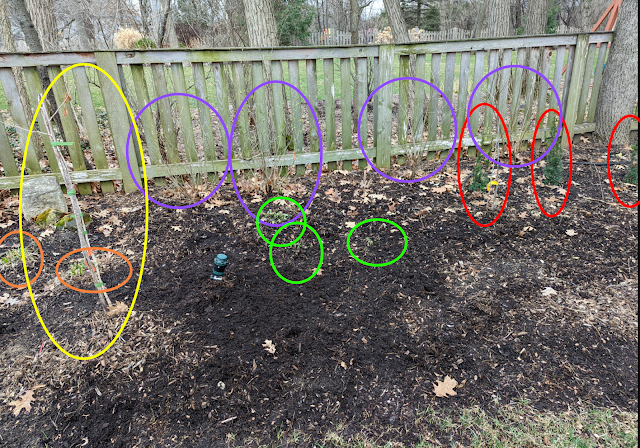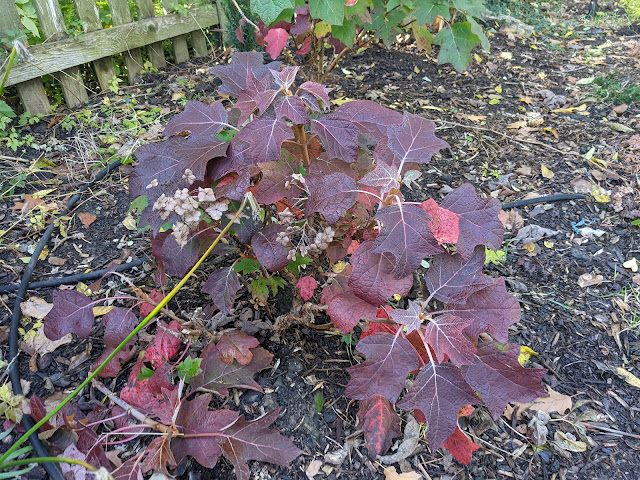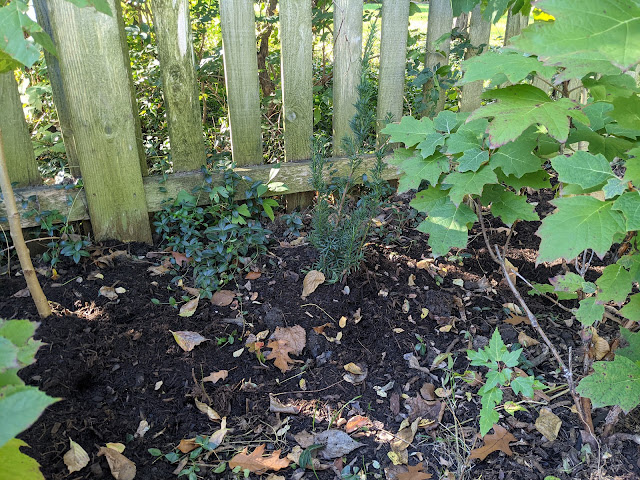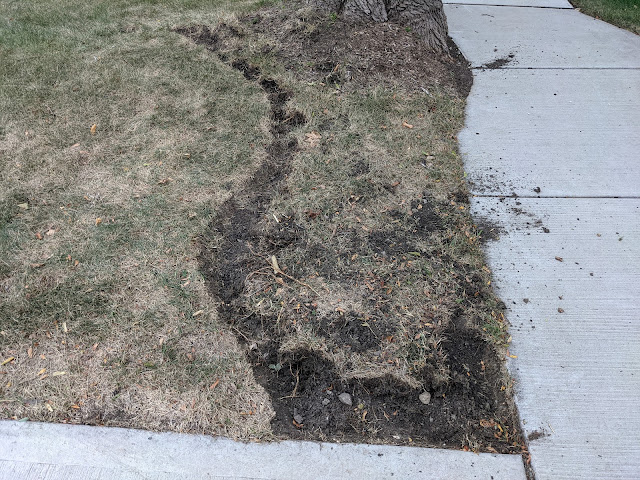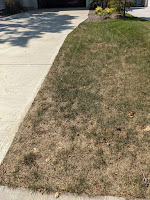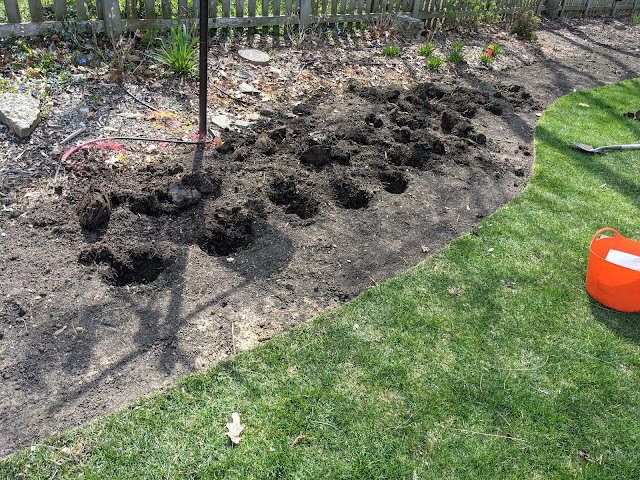Treeform Doublefile Viburnum On Northside Planted - April 2022

We brought home four treeform DoubleFile Viburum a couple of weeks ago and once the Green Giant Thuja planting project (and Lilac transplanting), I got busy digging these Virurnum in the ground. Two went in along the north side fence, one went in back the fire pit and one is going in (not yet) in the front yard bed in front of our porch. Last Fall, I planted two Arrowwood Viburnum along the fenceline after finding them on an end-of-season close-out . The plan calls for a number of them, but four in a line where I've planted two (meaning...two more) and a few more along the back - some of which I've sub'd out (for now) for Lilacs. Starting out with the two additional ones along the north side fence ( see this post showing the location ), I needed to put in a pair between the two existing and the spot where the Canadian Hemlocks (which....are TINY, still) will grow. Like in the Lilac transplant landing zone, there was a scrub shrub standing which needed to come out s

